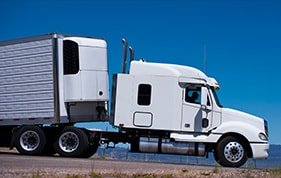The two popular starters go head to head.
Direct drive and gear reduction are the two methods that a starter can use to drive the ring gear of a flex plate or flywheel. Direct drive came first, and it involves using a large, low speed motor to rotate a pinion gear in a 1:1 ratio. Gear reduction was first introduced by Chrysler in the 1960s, but it entered mainstream usage about 20 years ago.
Unlike direct drive, gear reduction starters use smaller, faster motors to rotate their pinion gears in a roughly 4:1 ratio, which results in lower power consumption and higher torque. When direct drive and gear reduction starters are compared, direct drive units are typically cheaper, and gear reduction units tend to be smaller, lighter, and more efficient.
Direct drive |
Gear Reduction |
|---|---|
| Large, low speed motor | Small, fast motor |
| Rotates a pinion gear in a 1:1 ratio | Rotates a pinion gear in a 4:1 ratio |
| Typically cheaper | Typically more expensive |
In starters that use direct drive, the armature shaft of the starter motor is attached directly to the drive mechanism. Although “gear reduction” technically takes place between the starter’s pinion gear and the ring gear on the flywheel or flex plate, the pinion gear itself rotates in a 1:1 ratio with the armature shaft.
Gear reduction can be achieved with either spur or planetary gears. Due to the way that spur gears work, starters that use them require an offset armature, which is achieved by placing the starter drive in separate gear housing. In starters that use planetary gears, the gears can be contained in an in line drive-end housing. In either case, the armature shaft will typically rotate about four times for each rotation of the pinion gear.
The main benefit of gear reduction is that it allows for significantly smaller starters that produce an equal or greater amount of torque in comparison to much larger direct drive starters. The main drawback is that they are typically more expensive.
Why Replace Direct Drive With Gear Reduction?
- These starters typically achieve a gear reduction ratio of 4:1
- Use smaller, faster motors that draw less amperage
- Well-suited for cold weather when the available cranking amperage from a battery will drop
Of course, a 4:1 gear reduction ratio also means that a gear reduction starter can often produce more torque than a much larger, heavier direct drive starter. In some cases, a direct drive starter can weigh as much as two times more than a comparable gear reduction unit. That represents a significant power/torque to weight ratio benefit, but it also means they are physically smaller and often easier to install.
View our gear reduction starters
Availability and Price of Gear Reduction Starters
Most original equipment manufacturers have embraced gear reduction technology over the course of the last few decades. In addition to using gear reduction starters in most new vehicles, the technology is also available for a lot of older applications. These starters have also come down in price over years. So while gear reduction starters are still more expensive than direct drive starters, they are more affordable than they used to be.
Gear reduction starters are also available from the aftermarket, which is one way to offset the higher price that is typically associated with these units. For instance, an Elreg brand 39mt starter is functionally identical to a Delco 39mt, but the aftermarket unit represents a significant savings versus the original equipment. In cases where a high quality aftermarket unit is available, it will often cost about half as much as an OEM unit.
Why Use Direct Drive?
Although gear reduction starters are superior to direct drive in most cases, there are still a few reasons to use direct drive. The most obvious benefit of direct drive is price, which can become a rather large issue. For instance, direct drive starters are often the better choice for heavy duty diesel applications. In some of these applications, a gear reduction starter can cost 30 percent more than a direct drive unit.
View our Direct Drive Starters
Direct Drive or Gear Reduction?
Direct drive and gear reduction starters both have their own benefits and drawbacks, which is why the technologies have continued to exist side by side for so many years. In order to determine which one is the best choice for any given situation, it’s important to consider the cost of a unit, its torque to weight ratio, efficiency, cranking ability in cold weather, and other relevant factors.
Interested in learning more about the differences between direct drive and gear reduction starters? Contact us today to speak with one of our experts.




